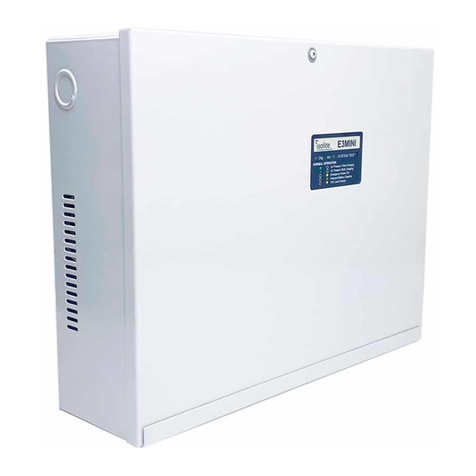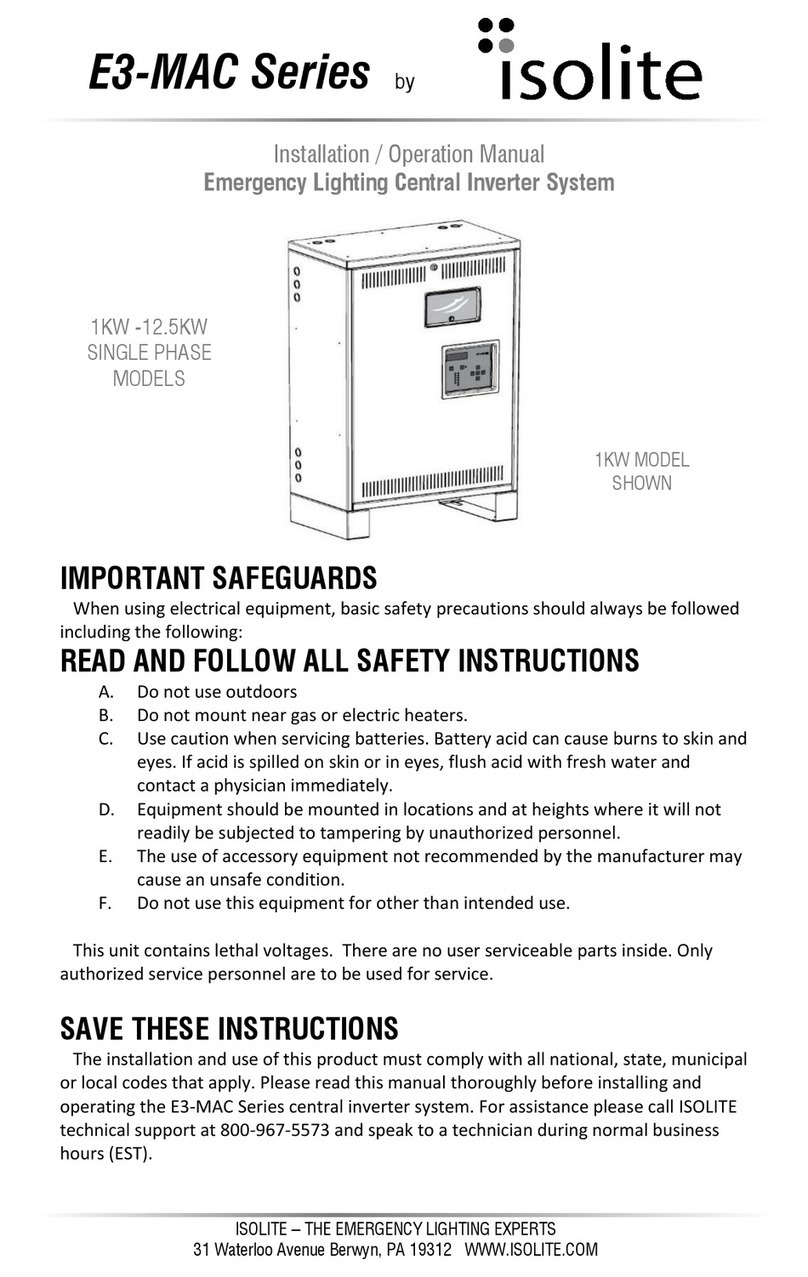
4
1.0 Introduction
This Central Inverter System integrates the latest power electronics and microprocessor technology
which produces a pure sine wave power output intended for use in Emergency Lighting. The system is
very efficient on-line and typically has a standby power loss of only 2 percent of the systems total
capacity which means it is 98% efficient. This high efficiency and the ability to turn lighting loads on and
off using the optional switched load outputs make it ideal for energy saving and green initiatives. This
equipment was specifically designed for modern lighting loads and as such has very high inrush current
capability which are required for today’s LED drivers and electronic lighting loads. It is UL-924 compliant
for Self-Testing and Self Diagnostic and as such performs internal checks and tests and records them in
backup logs. The MMI (Man Machine Interface) which consists of a 5 button keypad and backlit LCD
display is very powerful and feature rich. Users can access all stored logs and diagnostic tools such as
meter functions, they can also change alarm functions and much more. The machine was designed on a
modular concept so virtually any voltage combination can be created using these modules including
single phase, split phase, and three phase.
1.1 Mechanical Features
This product was designed having the electrical installer in mind. It can be easily recognized as the
simplest and fastest Central Inverter installation in the industry for its KVA size and capabilities.
Batteries are Front Terminal type which makes connecting up the batteries extremely fast. Simply slide
the batteries into the cabinet, connect up the jumpers and connect the inter-shelf (model dependent)
wiring and the battery install is finished. All battery connections come to the front –this means no
reaching to the back through a string of batteries to make connections! The AC connections are also
very easy to accomplish with the contractor landing the inputs and outputs to either Circuit Breakers or
Terminals, Neutral wires are connected to a common neutral buss bar and Ground wires are also all
connected to a common ground bar. Contractor wiring is very similar to connecting to an electrical panel
in that there are knockouts on both sides and tops of the cabinet for easy conduit connection and then
wires are then easily run into the cabinet and connected to ground bars, neutral bars and circuit
breakers.
The machine was designed for Seismic Zone 4, has Powder Painted 14 gauge Cold Rolled Steel
construction with no visible outside bolts or rivets. Internally, it has all galvanized or painted steel parts
for all the modules and shelves that resist corrosion and provide durability and high quality.
1.2 Electrical Features
This product line has one of the most flexible voltage configurations in the industry due to its modular
design concept. Each module can be configured as 120 or 277 or 120/240. The modules can be arranged
in parallel, series or Wye connected. This gives the capability of producing voltages of single phase (L-N
and L-L), split phase (L-N-L), and three phase. By utilizing a modular concept, it provides scalability, quick
delivery and in the event of issues, very fast MTTR (Mean Time to Repair).





























